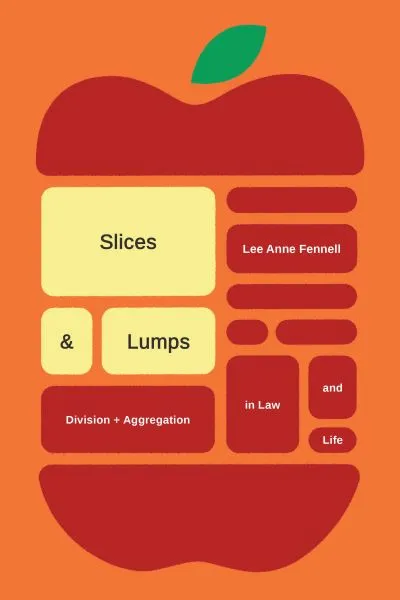Rethinking How We Bundle and Divide

EDITOR'S NOTE: On November 8, 2019, the Coase-Sandor Institute for Law and Economics will host a one-day symposium on Lee Fennell’s new book, Slices and Lumps: Division and Aggregation in Law and Life. The conference, which is open to the public, begins at 8:30 a.m. and will be held in Room V at the University of Chicago Law School. The contributions to the symposium will be published in a symposium edition of the University of Chicago Law Review Online.
Time, like so many other facets of modern life, can be lumped together—or it can be divvied up. Although each day is a lump of 24 hours that cannot be reused or elongated, the minutes and hours can be allocated to different activities in nearly limitless ways. A professor writing a book, for instance, might find that she is most effective if she sets aside several hours a week—or several hours a day—to write, rather than trying to accomplish the entire project in a series of marathon sessions or in scattered 10-minute bursts. But assembling the cooperation of all of her temporal selves—and arranging the rest of her life to preserve those time blocks—may be quite another matter.
Land, jobs, goods, services, and countless other commodities can be sliced or lumped, too—and in each case, how we choose to group or divide these resources matters, Professor Lee Fennell argues in a new book, Slices and Lumps: Division and Aggregation in Law and Life (University of Chicago Press). It’s a concept, she says, that can improve our approach to urbanization, conservation, the sharing economy, legal doctrines, and even personal struggles with time, money, health, and work.
“Configuring well is extraordinarily valuable but often elusive. Assembly and division problems crop up in nearly every aspect of life, yet the importance of configuration is underappreciated,” said Fennell, the Max Pam Professor of Law. “New technologies make it easier than ever to bring people and ideas together and to slice up jobs, homes, cars, and other goods in ways that were previously impossible. Yet core challenges remain: getting people to agree to a novel configuration and deciding how to split up the surplus from the new arrangement.”
In Slices and Lumps, Fennell argues that dividing and aggregating are really two sides of the same coin. Lumpy goods, she notes, lose value if they are broken up. Consider bridges (how can one cross a river on half a bridge?), conservation of habitats (animals need a certain amount of contiguous space and resources in order to survive), and electoral college votes in winner-take-all states. But other goods become more valuable when divided, such as a large parcel of land that is more valuable when subdivided into smaller building lots. Both types of challenges—carving out useful slices and assembling useful lumps—require cooperation among those who have control over the resource in question.
Throughout the book, Fennell questions conventional thinking, emphasizing the need to account for innovations that segment or bundle goods and services in new ways. For instance, a generation ago most Americans were wedded to the notion that one had to own the whole car, and pay the whole insurance bill, if one wanted access to an automobile. Today, people share cars through applications like Zipcar and companies like Metromile, which charges for insurance only by each mile driven. In high-priced urban areas, housing is changing, too. Assumptions about square-footage minimums have begun to break down with the rise of microunits suited to single-person households—a trend whose success depends in part on how housing fits together with surrounding urban amenities like parks that offer additional shareable space.
Looking at resources and their uses in a slices-and-lumps fashion, Fennell contends, can help governments, markets, and households understand the choices that confront them and illuminate alternatives. We need not take lumps as we find them, but can instead ask whether a better configuration exists, and how we might innovate toward it. And such innovation is indeed underway in many sectors.
“But it is essential to consider what other changes these new configurations bring with them,” she added. “For example, new ways of slicing up homes or jobs may also do away with beneficial legal protections or social arrangements.”
Thus, Fennell advocates for an emphasis on configuration entrepreneurship, one that prioritizes improving the aggregation and division of goods, services, and other items in both the public and private sector. Treating the art and science of configuration as a crucial area of research enables us to see how lumping and slicing problems in different arenas share a common structure, raise related concerns, and may be amenable to similar solutions.
“Developing such a field of inquiry,” she said, “could lead to better policy, better laws, and better approaches to problem solving in many areas of public and private life.”



